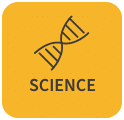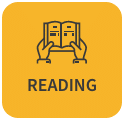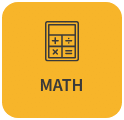- Ontario:
- Math
- Language Arts
- Social Studies
- Science
Ontario
Activities for Ontario Grade 1 Science Curriculum (2022)
Expectations are in black and skills are in blue. Click on the name of the skill to practice that skill.
Please check back as we are always adding more content!
1.B Life Systems – Needs and Characteristics of Living Things
B1. Relating Science and Technology to Our Changing World
B1.1 describe changes or problems that could result from the loss of living and non-living things that are part of everyday life, while taking different perspectives into consideration
B1.2 identify actions that can be taken to contribute to a healthy environment
B2. Exploring and Understanding Concepts
B2.1 demonstrate an understanding of the natural environment as a place where living and non-living things are interconnected
B2.2 identify the basic needs of living things, including the need for air, water, food, heat, shelter, and space
B2.3 identify the physical characteristics of various plants and animals, including humans, and explain how these characteristics help the plants and animals meet their basic needs
Digital Resources
• Lesson 05 – Animals On the Move
• Lesson 06 – Parts of a Plant
• Lesson 07 – Experiment: How Do Plants Take Up Water?
Printable Worksheets
B2.4 identify the location and the function of various parts of the human body, including sensory organs
Digital Resources
• Lesson 02 – Your Body Helps You
• Lesson 03 – Your Five Senses
• Lesson 04 – Listen for Sounds
Printable Worksheets
• My Body
B2.5 describe the characteristics of a healthy environment, including clean air and water and nutritious food, and how a healthy environment enables living things to meet their needs
B2.6 describe ways in which living things provide for the needs of other living things
1.C Matter and Energy – Energy in Our Lives
C1. Relating Science and Technology to Our Changing World
C1.1 describe everyday uses of energy at school and at home, and suggest ways to use energy responsibly
C1.2 describe how the lives of people and other living things would be affected if electrical energy were no longer available
C2. Exploring and Understanding Concepts
C2.1 demonstrate an understanding that energy is the ability to move or change something
C2.2 demonstrate an understanding that the Sun is Earth’s principal source of energy, including how it warms the air, land, and water; is a source of light for Earth; and makes it possible for plants to grow
Digital Resources
• Lesson 03 – We Get Energy from the Sun
• Lesson 04 – Experiment: What Does Sunlight Do to Water?
• Lesson 05 – Experiment: What Does Sunlight Do to Plants?
Printable Worksheets
C2.3 identify food as a source of energy for living things
C2.4 identify everyday uses of various sources of energy
C2.5 demonstrate an understanding that humans get the energy resources they need from the world around them, and that the supply of many of these resources is limited
Digital Resources
• Lesson 02 – Where Energy Comes From
• Lesson 07 – How Do We Get Our Food?
Printable Worksheets
C2.6 describe seasonal differences in how we use energy and in the forms of energy we use
Digital Resources
• Lesson 10 – Using Energy to Stay Warm and Cool
Printable Worksheets
1.D Structures and Mechanisms – Everyday Materials, Objects, and Structures
D1. Relating Science and Technology to Our Changing World
D1.1 identify the kinds of waste materials produced by humans, and plan and carry out a course of action for minimizing waste in the classroom or at home, explaining why each action is important
D1.2 assess everyday objects, including structures, that have similar purposes, in terms of the materials they are made from, the source of these materials, and what happens to these objects when they are worn out or no longer needed
D2. Exploring and Understanding Concepts
D2.1 describe objects as things that are made of one or more materials
Digital Resources
• Lesson 01 – Objects Are Made from Materials
• Lesson 05 – More About Objects and Materials
Printable Worksheets
D2.2 identify structures that are objects designed to support a load, including those acting as supporting frameworks for objects
D2.3 identify materials that are used to make various everyday objects, including structures
D2.4 describe observable characteristics of various everyday objects, including structures, using qualitative information gathered through their senses
Digital Resources
• Lesson 08 – Experiment: Repelling Water
• Lesson 09 – Experiment: Absorbing Water
Printable Worksheets
D2.5 describe purposes of everyday objects, including structures
D2.6 identify properties of materials that enable the objects made from them to perform their intended function
Digital Resources
• Lesson 04 – Where Do Materials Come From?
• Lesson 10 – What I Learned About Materials and Structures Quiz
Printable Worksheets
D2.7 identify different kinds of fasteners and describe uses for each
D2.8 identify sources in nature of some common materials that are used to make various objects, including structures
1.E Earth and Space Systems – Daily and Seasonal Changes
E1. Relating Science and Technology to Our Changing World
E1.1 assess the impact of daily and seasonal changes on human outdoor activities, and identify innovations that enable people to engage in various activities year-round
E1.2 assess ways in which daily and seasonal changes have an impact on society, the environment, and living things in the natural environment
Digital Resources
Printable Worksheets
E2. Exploring and Understanding Concepts
E2.1 demonstrate an understanding of Earth’s relationship to the Sun and that this relationship results in daily and seasonal changes on Earth
E2.2 demonstrate an understanding that a cycle is a series of repeating events, and that cycles can be observed in daily and seasonal changes
E2.3 describe the changes in the amount of light and heat from the Sun that occur throughout the day and in the four seasons
Digital Resources
• Lesson 03 – Experiment: Compare Temperatures
• Lesson 08 – The Seasons and the Environment
Printable Worksheets
E2.4 describe and compare the four seasons in terms of the weather, including precipitation and temperature, in their local area
Digital Resources
• Lesson 04 – The Four Seasons
• Lesson 09 – What I Learned About the Seasons Quiz
Printable Worksheets
E2.5 describe changes in the appearance or behaviour of living things that are adaptations to seasonal changes
Digital Resources
• Lesson 05 – The Seasons Make Plants Change
• Lesson 06 – The Seasons Make Animals Change
Printable Worksheets
E2.6 describe how humans prepare for, and respond to, daily and seasonal changes
Digital Resources
• Lesson 02 – Light and Heat Change What We Do
• Lesson 07 – The Seasons Change What We Do









